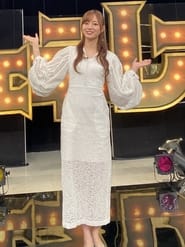Tbs TV Series - Page 48
-
就活タイムカプセル
2022
就活タイムカプセル
2022
-
ぶっせん
2013
ぶっせん
2013
-
News na Futari
2015
News na Futari
2015
-
Dinner on the Slopes
2025
Dinner on the Slopes
2025
26-year-old Yano Shohei (Shirahama Alan) is an AP (assistant producer) working at a TV station. He's not so good at his job, but his snowboarding skills are outstanding. He falls in love at first sight with a mysterious beauty, Hirose Yuki (Yamamoto Mizuki), whom he meets at the bar "Romance". However, he is shy and cannot confess his feelings. With the help of Aitaro (Kukki!), Shohei gets through to the owner, Furui Kami (Hirose Kohmi), also known as the "God of Romance", on the phone. Following her advice, Shohei asks Yuki out on a date. The two decide to go to a ski slope that Yuki had in her guidebook, but what awaits them there is not a romantic romance, but a dizzying romance over food...!! -
Mujaki na Kankei
0000
-
Ariyoshi Japon Ⅱ Jiro Jiro Ariyoshi
2020
Ariyoshi Japon is an information variety show about gossips of the entertainment world and night spots that Hiroyuki Ariyoshi talks wickedly with his poison tongue. Common topics are being delved that are unique to a midnight show, and Ariyoshi adds his comments of his own perspective and talks with the panelists. Minami Tanaka is the facilitator. Mitsuyo Ota and Masafumi Suzuki appear as regulars. -
Uchi no Ko ni Kagitte...
0000
Uchi no Ko ni Kagitte... is a Japanese television drama series that first aired on TBS in 1984. -
Kato-chan Ken-chan Gokigen TV
0000
Kato-chan Ken-chan Gokigen TV is a popular Japanese television variety show aired on Tokyo Broadcasting System around the mid-1980s. Starring Ken Shimura and Cha Kato, former members of the group The Drifters from Hachiji Dayo! Zen'in Shugo, the irreverent and satirical program would poke fun at contemporary society in Japan, and would feature comedy vignettes similar to those found on The Benny Hill Show or The Carol Burnett Show. Leslie Nielsen once made a special appearance on the show as well. It is notable for having a segment featuring funny home videos sent in by viewers, as the home camcorder became more popular in Japan, which Ken and Kato would comment on. In 1989, American producer Vin Di Bona initiated a partnership with Tokyo Broadcasting System to develop a similar program in the west, which ultimately led to the successful America's Funniest Home Videos and other similar shows worldwide. Some videos seen in the first season of America's Funniest Home Videos originally aired on Fun TV with Kato-chan -
Nantatte 18 sai!
0000
Nantatte 18 sai!
0000
Nantatte 18 sai! is a Japanese television drama series that first aired on TBS in 1971. -
Mito Komon
0000
star 10A historic figure Tokugawa Mitsukuni, former vice-shogun and retired daimyo of the Mito domain travels through Japan in the guise of Mitsuemon, a retired crêpe merchant from Echigo province, accompanied by his two samurai retainers, fun-loving Sasaki Sukesaburō (Suke-san) and studious Atsumi Kakunoshin (Kaku-san). -
有田ジェネレーション
2016
有田ジェネレーション
2016
-
Ponytail wa Furimukanai
0000
Ponytail wa Furimukanai is a Japanese television drama series that aired on TBS in 1985. It is based on a novel by Takashi Kitajima. -
Hanamaru Market
0000
-
Kinniku Banzuke
0000
Kinniku Banzuke
0000
Kinniku Banzuke a.k.a. Unbeatable Banzuke was a weekly Japanese television program and the premier sports entertainment variety show of the Tokyo Broadcasting System. Its successors were Taiiku Oukoku and Ougon Kinniku. They succeeded by Muscle Musical. Several seasonal specials were also made, such as Pro Sportsman No.1 and Sasuke. Originally a late night Friday broadcast, the television special was popular and started airing in prime time on October 14, 1995. It was broadcast every season and gained popularity as Sportsman No.1 Ketteisen. Through various games reverting to the origins of sports, professional players and general participants challenged the limits of physical strength and technique, winning prizes if all targets were successfully destroyed. Kane Kosugi's Shaolin Temple training and Akira Oomori's Muay Thai bouts were also documented in the broadcasts. The popularity of the displays of amazing physical strength and technique by professional players and luck of general participants drove TV Asahi t -
音楽の日
0000
音楽の日
0000
-
霜降りミキXIT
2020
霜降りミキXIT
2020
-
TFP2
0000
TFP2
0000
Tokyo Friendly Park 2 is a Japanese game show that premiered in April 1994 on the Tokyo Broadcasting Station. TFP2 airs on Monday nights roughly from 6:55 - 7:54 JST in Japan. -
Natsu ni Koisuru Onnatachi
0000
Natsu ni Koisuru Onnatachi is a Japanese television drama series that aired on TBS in 1983. -
Omoide Zukuri
0000
Omoide Zukuri
0000
Omoide Zukuri is a Japanese television drama series that first aired on TBS in 1981.










